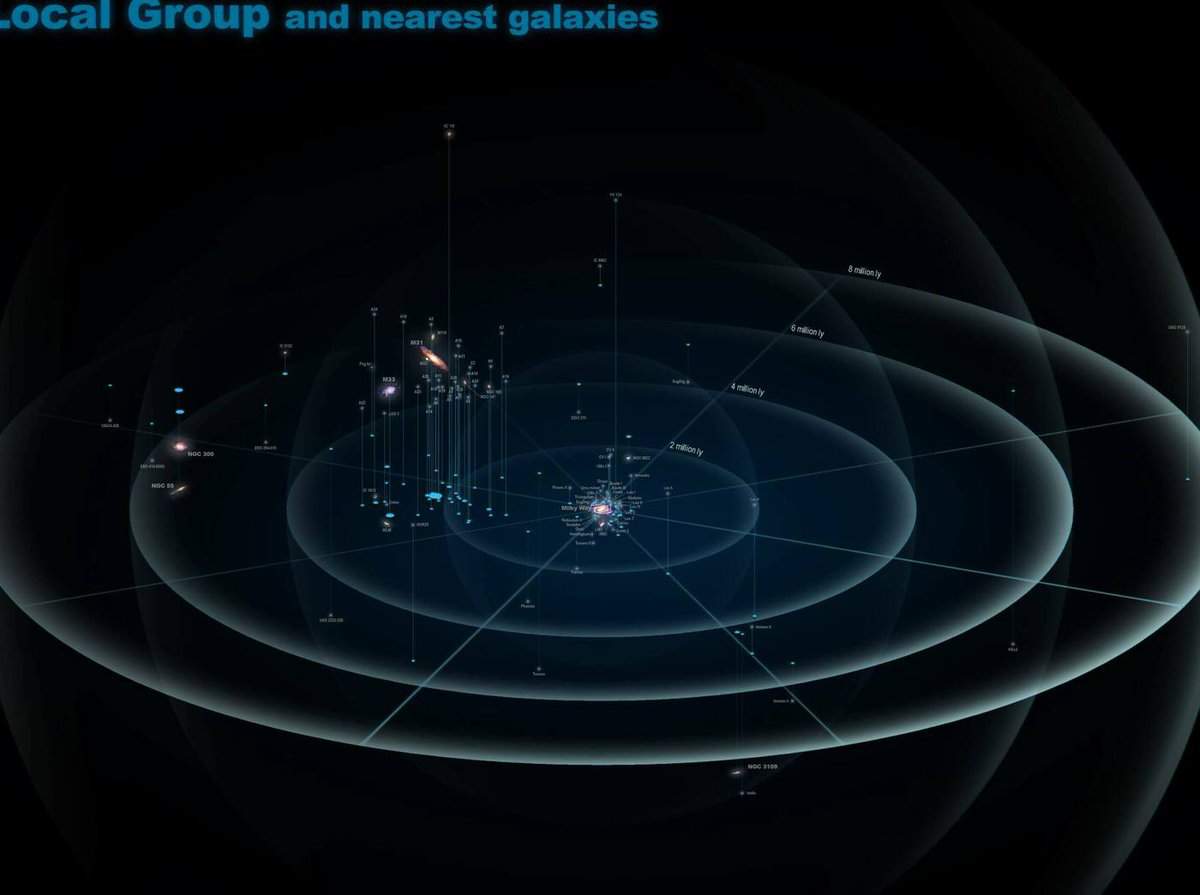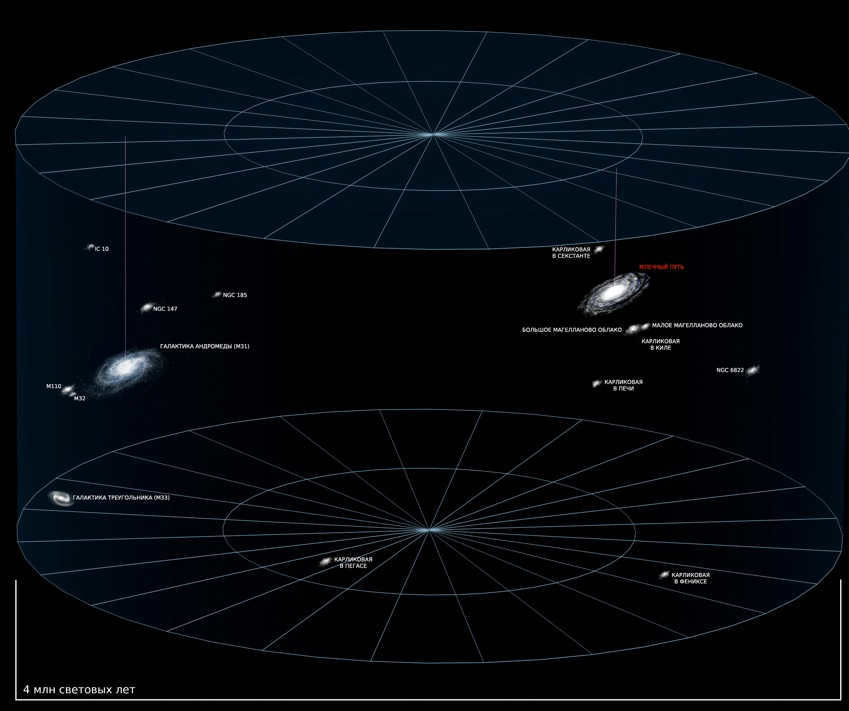
The Local Group of galaxies is an assemblage of more than 50 galaxies, with the Milky Way being one of them. It is a system that is bound together by gravity.
Key Details
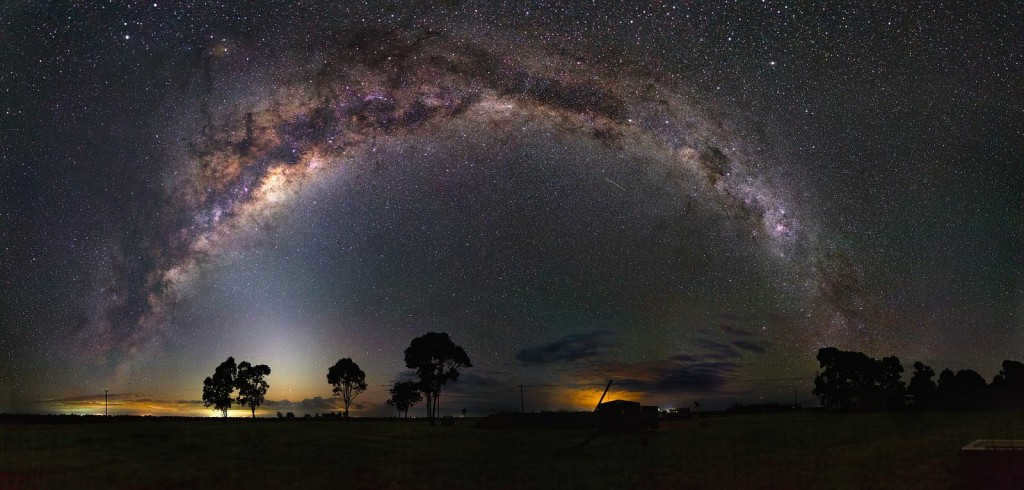
The Local Group of galaxies is an astronomical phenomenon that continues to captivate our imaginations. It is a constant reminder of the vastness of the cosmos, a concept that is often difficult for us to fully grasp. As we gaze upon the majestic night sky and delve into the pages of popular astronomy books, we are continually astounded by the sheer grandeur of these celestial bodies. The objects that inhabit the expanse of space are so immense that our human minds struggle to comprehend their true scale. The Local Group of galaxies stands as a testament to this extraordinary magnitude.
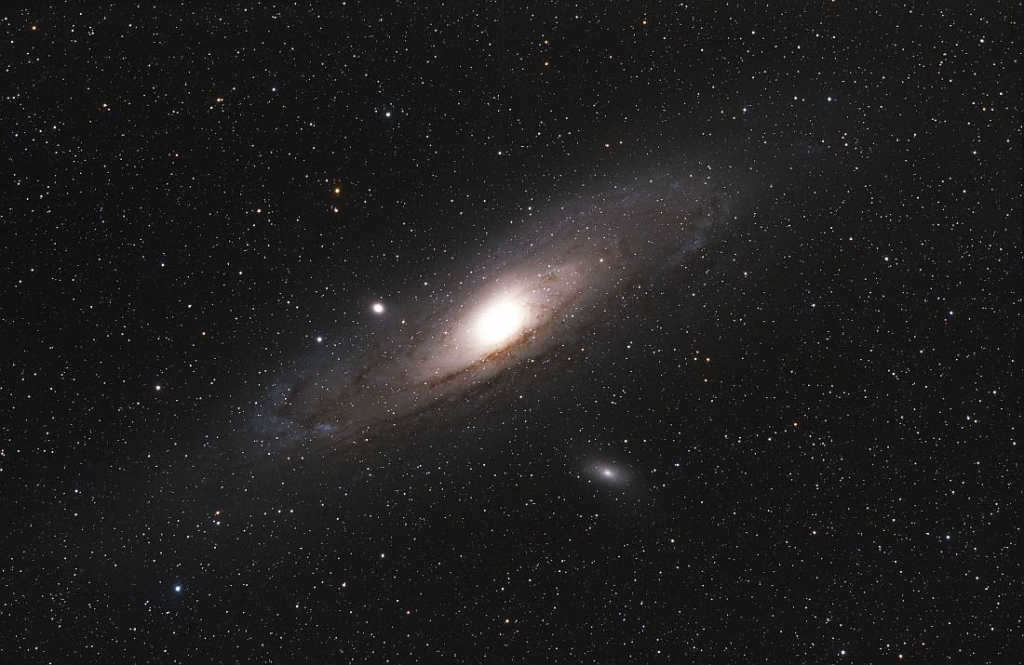
As of 2015, there are more than 50 galaxies of different sizes within the Local Group. The Milky Way, Andromeda, and Triangle galaxies are the largest entities in this system. These three dominant galaxies have their own clusters of galaxies that are gravitationally associated with them. The primary galaxies, including Andromeda, the Triangle, and the Milky Way, are also interconnected by gravitational forces and orbit a shared center of mass in space.
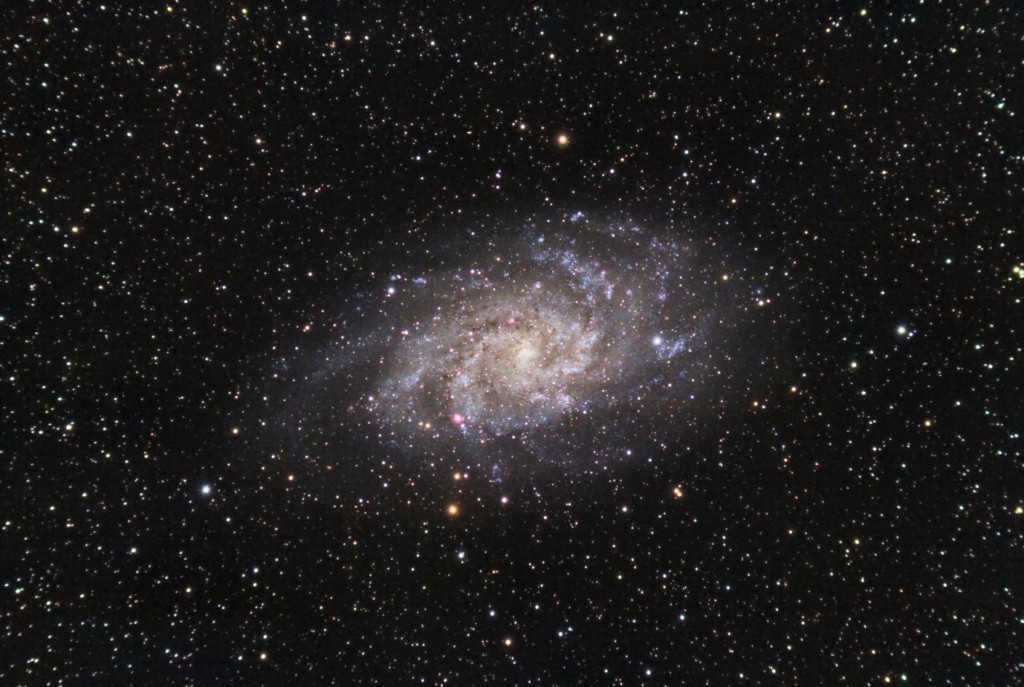
Galaxy M33 in the Triangle
In addition to the vast galaxies and their subgroups, the Local Group encompasses additional dwarf galaxies that cannot be classified under any of the aforementioned subgroups due to their positioning. The Local Group of galaxies comprises spiral, elliptical, dwarf elliptical, dwarf spheroidal, and irregular galaxies. There is a possibility that before the close of the century, scientists will stumble upon novel types of galaxies that are presently unidentified. This possibility holds weight, as astronomers across the globe continue to actively engage in serious observations and studies of the local group.
What is the composition of the local group of galaxies?
The local group of galaxies is made up of over 50 individual galaxies, each varying in size. These galaxies are held together by the force of gravity, causing them to orbit around a central point. Scientists believe that most galaxies in the local group share a similar age of around 13 billion years. Additionally, these galaxies share a common composition, suggesting a shared origin.
Studies of galaxies within the local group have revealed a distinct organization, indicating that they are not haphazardly arranged, but rather have a discernible structure. The majority of local group galaxies are positioned along a line that can be roughly traced between the Milky Way and the Andromeda Nebula. Smaller galaxies tend to cluster around the three main galaxies: the Milky Way, Andromeda, and the Triangle.
Subgroup of the Milky Way
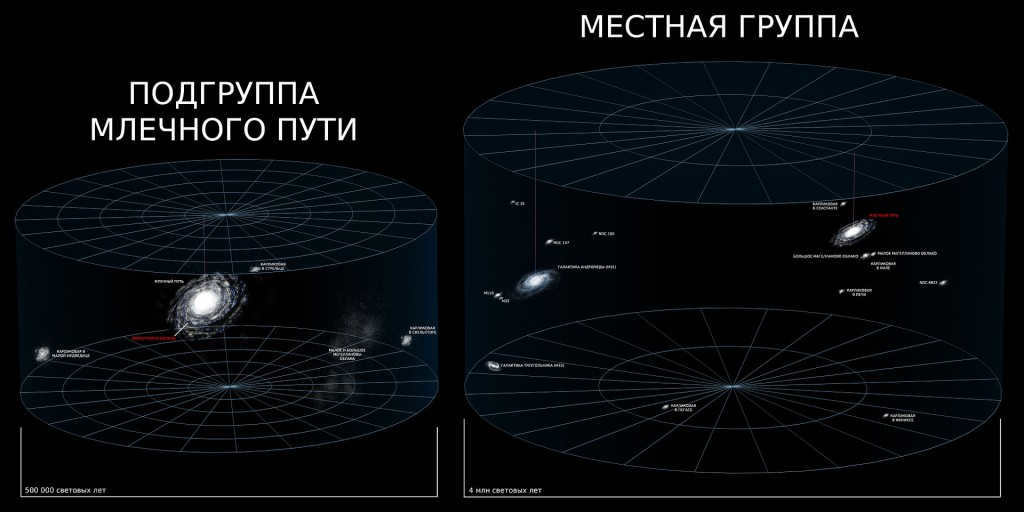
While not the largest galaxy in the observable Universe, the Milky Way Galaxy holds great significance for us as it is where the Solar System, and therefore humanity, resides. Situated within the local group of galaxies, the Milky Way serves as somewhat of a central hub within this cosmic neighborhood. At the heart of it all lies the Milky Way itself, with fourteen satellites orbiting around it. These satellites include well-known constellations such as the Big Dipper, Little Dipper, Big Dog, Sagittarius, Dragon, Sculptor, Lion, Kiel, and many more.
Previously, it was believed that the Large and Small Magellanic Clouds were part of a subgroup within the Milky Way. However, a fascinating discovery was made in 2006 with the assistance of the Hubble telescope – these entities are moving at an exceptionally fast pace compared to other satellites of the Milky Way. This suggests that they may not be gravitationally bound to our galaxy.
Nonetheless, the trajectory of the Large and Small Magellanic Clouds indicates that in approximately four billion years, they will be assimilated into the Milky Way galaxy. The Milky Way itself is also at risk of being engulfed by its colossal neighbor, the Andromeda Nebula.
The Andromeda cluster
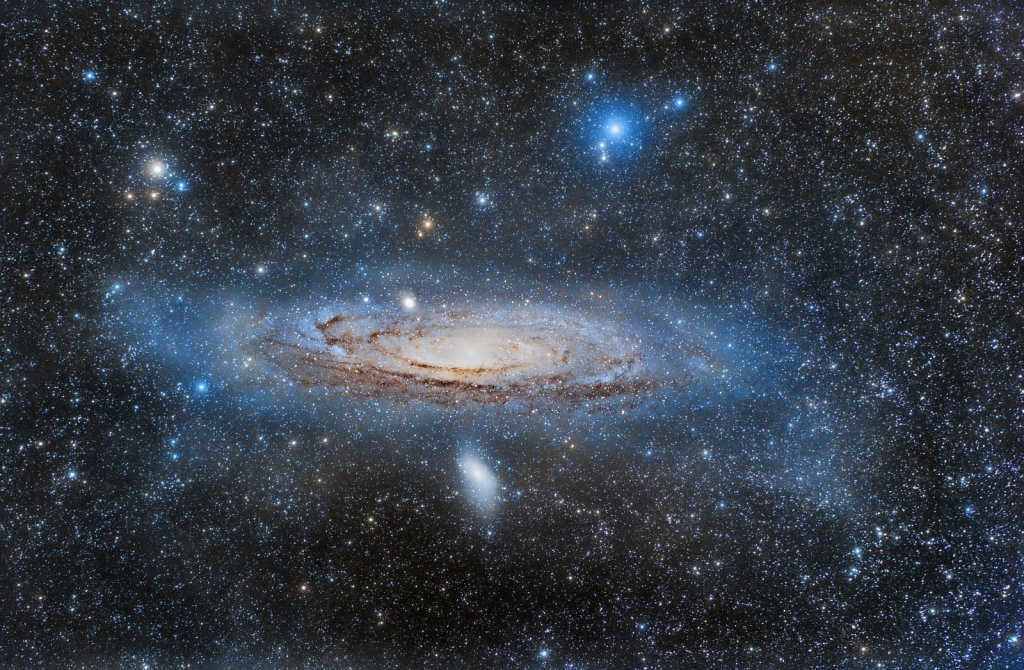
The Andromeda Galaxy M31 and its satellites
The Andromeda Galaxy is the biggest thing in the local group of galaxies. Similar to the Milky Way, this entity has 18 identified dwarf satellite galaxies that are held together by gravity. The most famous among these are M32 and M110. These galaxies are notable because they are the most luminous satellites of the Andromeda Nebula with a relatively low apparent stellar magnitude considering their immense distance.
The Andromeda Galaxy is situated approximately 2.5 million light-years apart from our own Milky Way galaxy. It holds the distinction of being the nearest galaxy to us, although it is regrettably difficult to observe as it is oriented edge-on in relation to Earth. Scientists have postulated that the gravitational pull of the Andromeda Nebula, which boasts a size almost twice that of the Milky Way, will eventually lead to the absorption and merger of our galaxy with Andromeda in approximately 5 billion years.
Subgroup of a triangle
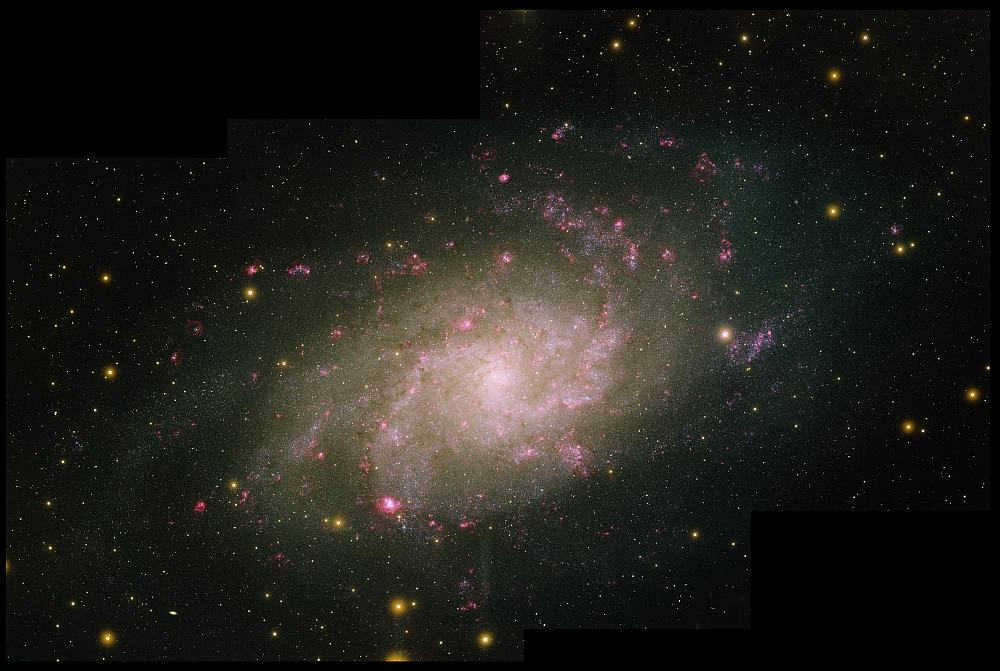
The Triangle galaxy, with its diameter measuring a mere 50,000 light-years, is considered relatively small in comparison to other cosmic entities. However, it still holds the distinction of being the third largest galaxy within the local group. Currently, there are three suspected satellite galaxies orbiting the Triangle Galaxy: Triangle I, Andromeda II, and the Pisces dwarf galaxy.
Resources about the subject
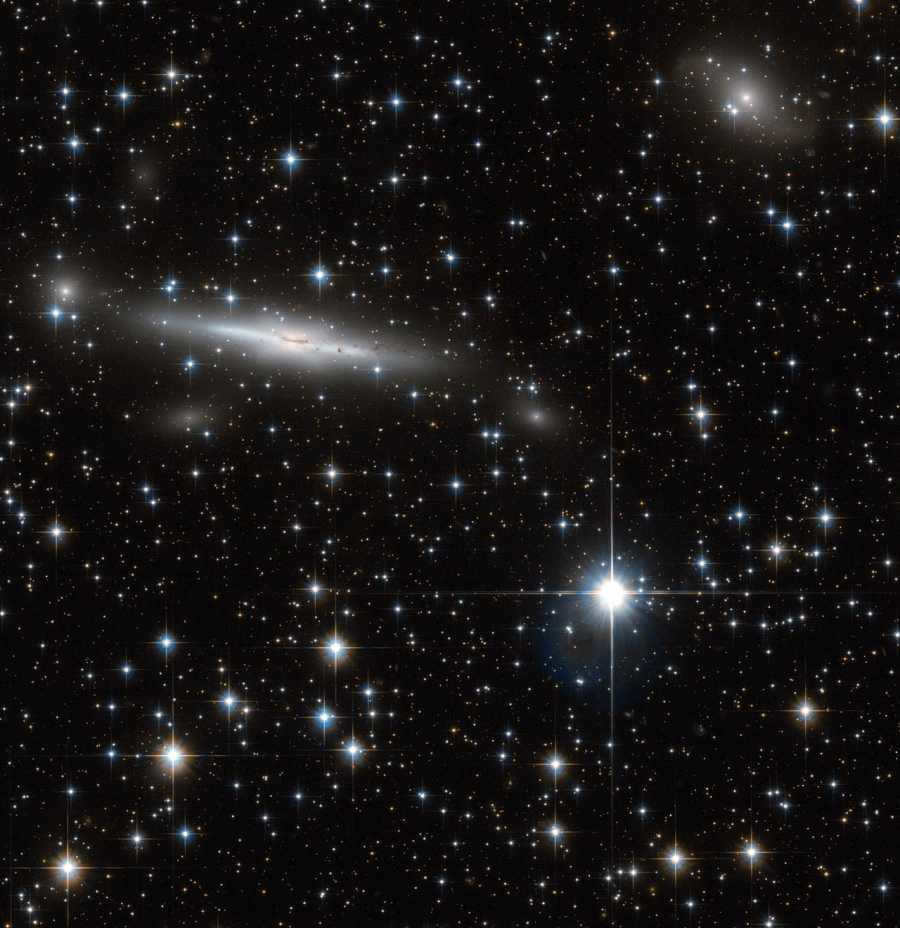
Regrettably, there is currently no conclusive evidence to suggest that the aforementioned satellites constitute a unified system with the Triangle. For instance, the dwarf galaxy Andromeda II is positioned roughly equidistant between the Andromeda Nebula and the Triangle Galaxy. The exact gravitational affiliation of this galaxy with either of the two remains uncertain. While most scientists posit that it does indeed pertain to the Triangle, there are dissenting astronomers who argue that this entity is part of the Andromeda Nebula. They even refer to this dwarf galaxy by a different name – Andromeda XXII. Only further observations and investigation of this object will be able to ascertain the truth: to which of the two local subgroups does this object belong?
Curious facts
After thoroughly examining the structure, composition, and general information about the cluster of galaxies in our vicinity, we would like to present a few fascinating facts about this astronomical phenomenon.
- The Andromeda Nebula, the largest object in the Local Cluster of Galaxies, is twice the size of the Milky Way and boasts a significant mass.
- The Triangle Galaxy is home to a massive black hole, M33 X-7, which weighs 16 times more than the Sun. It stands as one of the largest black holes known to humanity (excluding supermassive ones) up to date.
- The Local Group of galaxies spans a diameter of 4 million light-years, whereas the Local Subgroup of the Milky Way measures 500 thousand light-years across.
- The dwarf galaxy in SagDIG of Sagittarius holds the distinction of being the farthest object within the Local Group, situated a staggering 3.4 million light-years away from our beloved Earth.
- Within the local group of galaxies, there are a minimum of three sizable globular star clusters that can be found.
Hello, dear guests of my little website!
Today, let’s explore the concept of a local cluster of galaxies and its constituents.
The Universe is not limited to just the Milky Way.
Our galaxy and its companion, the Andromeda Galaxy, are connected through gravity.
In addition to them, many smaller galaxies, including M33 (Messier33) in the Triangle and the Magellanic Clouds, have been captured.
Collectively, they form what is known as the Local Group.
The term “Local Group” was coined by Edwin Hubble in 1936 when he measured the distances to objects outside of our galaxy.
Hubble’s observations of the Andromeda Galaxy helped resolve the Great Controversy of 1920, and he later realized that some of the galactic objects he catalogued were so close to the Milky Way that they must be influenced by its gravitational force.
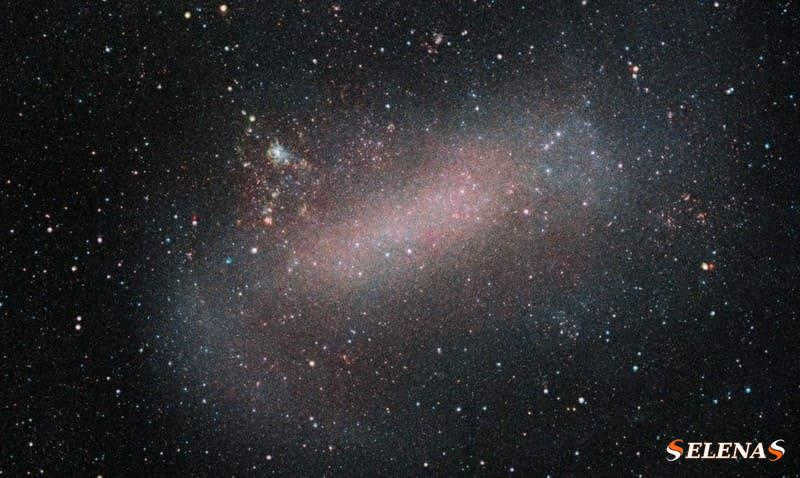
Over time, astronomers have made the discovery of numerous nearby dwarf galaxies, which has increased their count within the Local Group to numerous.
However, determining the exact number is still a topic of debate. In order for a galaxy to be considered part of the group, it must be gravitationally linked to other members, a task that can be quite challenging.
The majority of galaxies within the Local Group act as satellites to either the Milky Way or the Andromeda Galaxy.
There are a small number of other galaxies, like the Aquarius and Phoenix dwarf galaxies, that we know must be part of the group due to their close proximity and the combined gravitational pull of the two large spirals.
The difficulty arises when considering galaxies that are located on the outskirts of the group and are only marginally affected by its gravitational influence.
It is incredibly challenging to calculate distances on such vast scales using traditional methods of visually resolving individual stars and measuring redshift through spectroscopy.
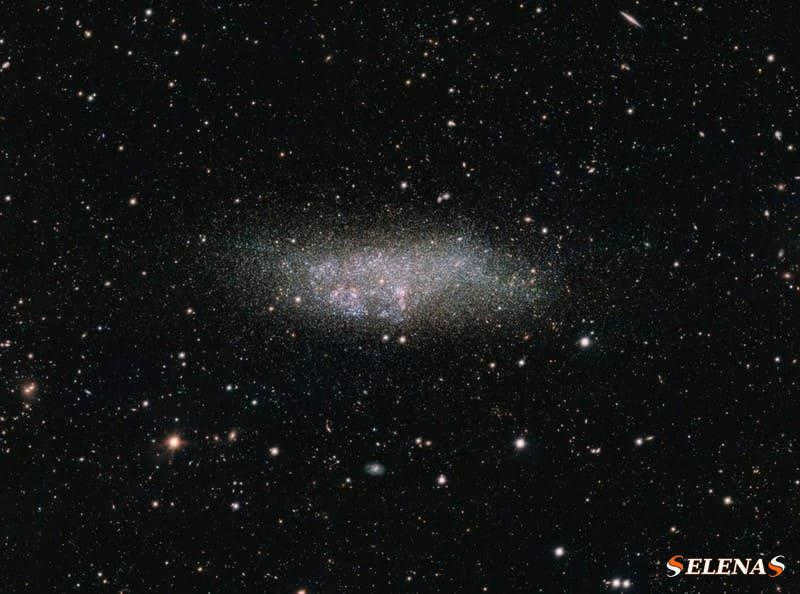

Wolf-Lundmark-Melotte is an isolated galaxy situated on the periphery of the Local Group. It is positioned at such a great distance that astronomers posit that it has never had any interactions with other galaxies within the Local Group.
In certain instances, a galaxy initially appeared to be a member of the Local Group, but more precise measurements of its distance revealed that it actually belongs to the nearest group.
This is precisely what occurred with the irregular galaxy known as “UGCA 86.”
Initially thought to be part of the Local Group, subsequent studies reclassified it as a member of the “IC 342/Maffei” group, which is a neighboring cluster of galaxies located within 10 million light-years from us.
However, it will become significantly simpler to determine which galaxies are included in the Local Group in a couple of billion years as they gradually come together.
In approximately four billion years, the two most prominent members of the group, Andromeda and the Milky Way, will be on a collision course of epic proportions.
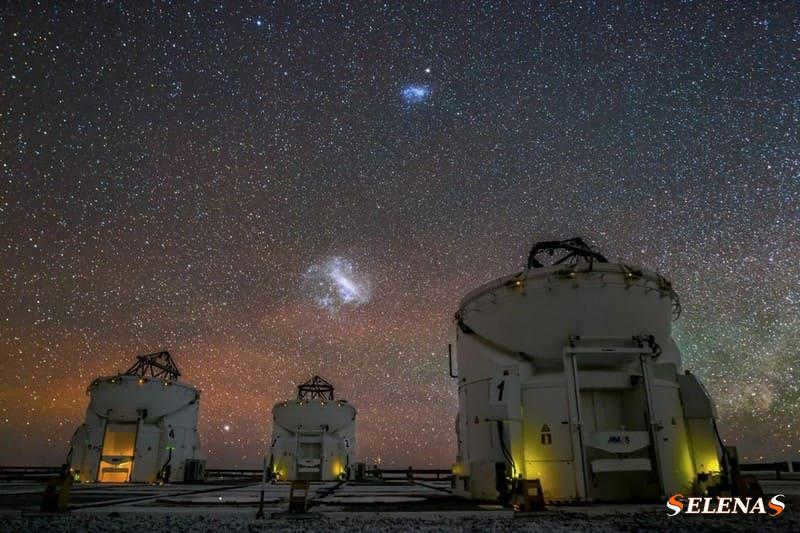

While this collision will be the most remarkable encounter these two spiral galaxies have experienced, it will not be their first.
Evidence of the dwarf galaxies that were incorporated into Andromeda can be detected in our own galactic partner, while a feature known as the Virgo Star Stream is believed to be the remnants of a dwarf galaxy that is presently merging with the Milky Way.
When the largest constituents of the Local Group combine, they will generate an immense elliptical galaxy.
The fate of the smaller galaxies, however, is still not entirely understood.
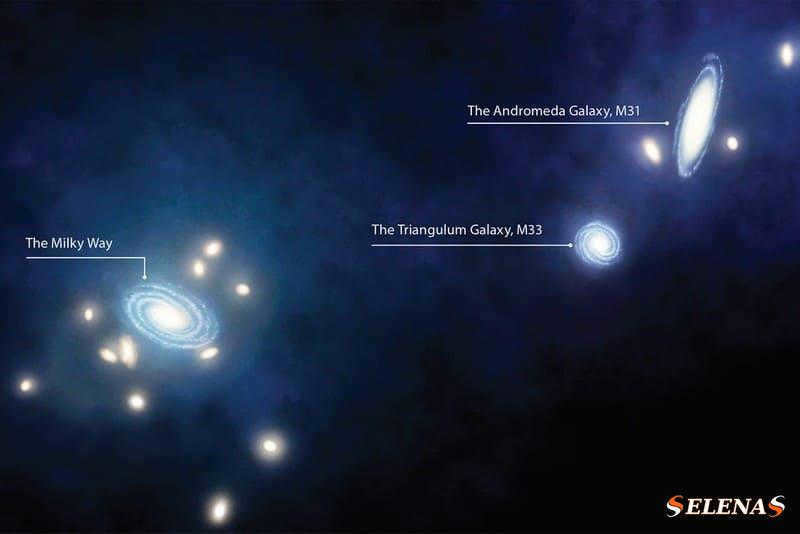
What is the best way to observe galaxies in the Local Group?
There are several fascinating objects within the Local Group that are worth observing and exploring.
However, due to the scattering of light from these galaxies, locating them can be a challenging task, and discerning intricate details can prove to be quite difficult.
As with any deep sky objects, it is crucial to conduct observations from an extremely dark location.
If you are in a favorable location, you might even be able to spot a few of these four galaxies without the aid of any optical instruments.
1. The Andromeda Galaxy, also known as M31
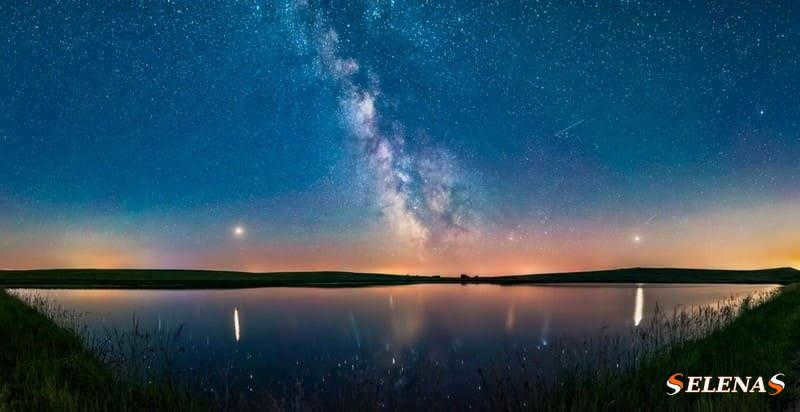
Tools: observable without any optical aid.
When we observe the plane of our Galaxy, the Milky Way appears as a celestial belt composed of numerous stars.
Throughout the year, the position of this celestial belt in the sky shifts, revealing various sections of our Galaxy.
2 The Large and Small Magellanic Clouds
The Large and Small Magellanic Clouds are two galaxies that are located near the Milky Way. These galaxies are named after the Portuguese explorer Ferdinand Magellan, who first observed them during his circumnavigation of the Earth in the 16th century. The Large Magellanic Cloud is the larger of the two, while the Small Magellanic Cloud is smaller in size.
Both of these galaxies are considered satellite galaxies of the Milky Way, meaning that they are gravitationally bound to our galaxy and orbit around it. They are located in the southern hemisphere and are visible from the southern latitudes. The Large Magellanic Cloud is about 160,000 light-years away from Earth, while the Small Magellanic Cloud is about 200,000 light-years away.
The Large and Small Magellanic Clouds are interesting objects of study for astronomers. They are relatively close to Earth, which allows scientists to study them in detail. They contain a wealth of stars, gas, and dust, which provide valuable information about the formation and evolution of galaxies. In fact, the Magellanic Clouds have been used as a laboratory to study the process of star formation and the effects of galactic interactions.
Overall, the Large and Small Magellanic Clouds are fascinating objects in the night sky. Their proximity to Earth and their unique properties make them important targets for astronomical research.
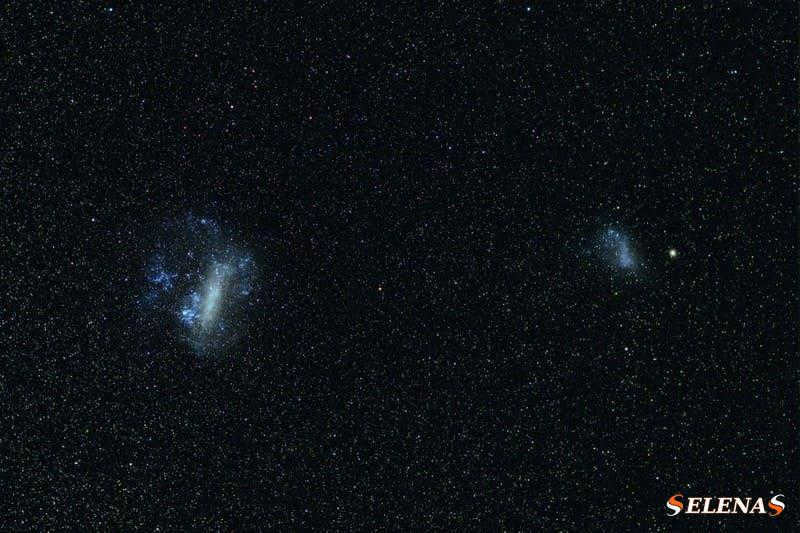
Equipment needed to observe the Goldfish/Mensa constellation (BMO) – Tucana (SMC) includes the naked eye, binoculars, and a telescope.
This particular constellation can only be seen from the southern hemisphere.
BMO, also known as the Large Magellanic Cloud, is classified as an irregular galaxy. However, its prominent rod-like structure near the center indicates that it might have been a spiral galaxy in the past. On the other hand, SMC is an irregular dwarf galaxy.
3. M33 – Triangle Galaxy
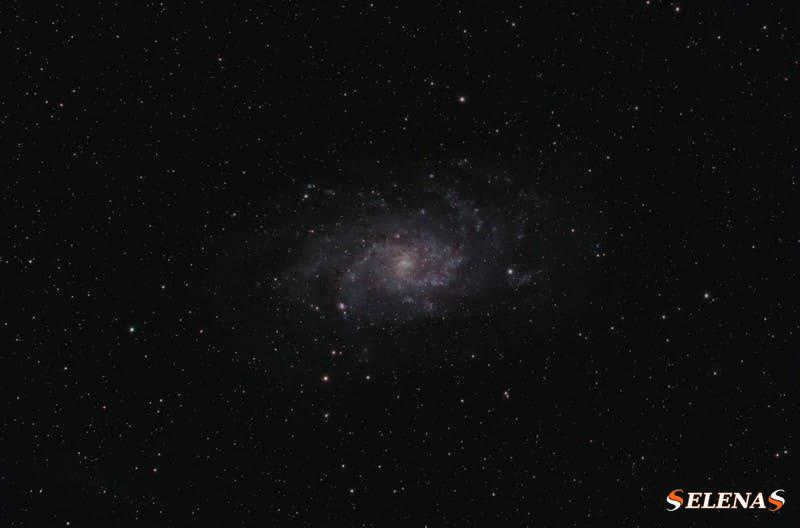
Gear: visible through binoculars and telescopes.
In April, the M33 galaxy, also known as the Triangle Galaxy, will become visible in the early morning, appearing low above the horizon.
Due to its low surface brightness, it is best observed using binoculars.
Overview: The local galaxy cluster is comprised of three primary galaxies – the Andromeda Galaxy (the largest), our very own Milky Way (second largest), and the Triangle Galaxy (third largest) – in addition to around 50 smaller dwarf galaxies.
If you have any further inquiries or wish to express your thoughts on this article, please feel free to do so in the comment section below.
Until next time! Join us!
“Surveys of the sky have revealed that nebulae exist both as individual entities and in variously sized clusters, some of which are surprisingly large. The distribution of galaxies on a small scale mirrors that of stars within star systems. [. ] Our Galaxy is part of a typical small nebulae group that stands out. Notable members of this “Local Group” include Our Galaxy, along with its two companions, the Magellanic Clouds; M31, accompanied by M32 and NGC205; M33, NGC6822, and IC1613. Three nebulae, namely NGC6946, IC10, and IC342, might also be part of this group, but their faintness makes it impossible to determine their distance.”
A cluster of galaxies called a Local Group (LG), which includes more than 40 galaxies, is where our Galaxy belongs. These galaxies are spread out within a 3 Mpc diameter volume. The center of mass of the MGs can be found towards M31, which has a mass one and a half times larger than our Galaxy. It is located at a distance of 0.48 Mpc from our Galaxy, which is 2/3 of the distance to M31. Not all galaxies clearly belong to the MG, and there are likely still undiscovered members of the group. The term “Local Group” was first used by Hubble when determining galaxy distances and redshifts.
The most massive and dominant members of the MG are the Milky Way and M31. Each of these large spiral galaxies has satellite galaxy systems surrounding them. Let’s take a closer look at them.
A subset of our galaxy
The Milky Way system is home to numerous small galaxies (62% of which are classified as E+Sph) scattered throughout the sky. These include Sag DEG, LMC, SMC, and small galaxies in the constellations Ursa Minor, Draco, Carina, Sextans (dwarf), Sculptor, Fornax, Leo I and Leo II, and possibly Tucana dwarf. In 1999, a new small spheroidal galaxy called Cetus (Whiting, Hau & Irwin) was discovered.
- According to Table 1, more than half of the objects in our galaxy’s subset are dwarf diffuse (spheroidal) galaxies of the Sculptor dSph type.
- With the exception of NGC 6822+SagittariusDIG and Tucana, which could potentially be unbound companions of the Galaxy, all galaxies have a tidal index greater than zero, indicating that they are gravitationally bound. This means that the subgroup of galaxies occupies a specific volume in space, which can be represented by an ellipsoid with an axis ratio of Z:Y:X=8:3:1. This ellipsoid is accompanied by clouds of neutral hydrogen from the Magellanic Stream. Rather than referring to this structure as a polar ring, it would be more accurate to call it a polar ellipsoid.
- The Leo-I galaxy, located at a distance of 0.27 Mpc (Lee et. al., 1993), possesses a radial velocity of +176 km/s (Zaritsky et. al., 1993) compared to the center of the Galaxy, which is significantly higher than the parabolic velocity of 118 km/s. According to the scenario described in Byrd et. al. (1994), the Leo-I galaxy was expelled from the vicinity of M31 when the M31 and Milky Way galaxies began to drift apart.
- There is no noticeable separation in the distribution of spheroidal and irregular satellites based on their distance from our Galaxy.
- Based on the average radial velocity of the satellites, which is +19±20 km/s, it can be concluded that the Milky Way subgroup is not undergoing significant contraction or expansion.
- The satellites of the Andromeda galaxy create a flat system with an axis ratio of 5:2:1. The major semi-axis of this system and the major (polar) axis of the Milky Way subgroup are at an angle of approximately 57 degrees.
- Morphological separation is clearly observed in this subgroup. The seven closest satellites of M31 consist of elliptical and spheroidal galaxies, while only spiral and irregular galaxies are found in the outskirts.
- According to Arp (1982), the distribution of the radial velocities of the satellites of M31 exhibits a high degree of asymmetry. By applying our criteria for galaxy membership, we have reduced the difference in radial velocities to +46±29 km/s compared to Arp’s findings. However, if we were to assume that the total mass of M31 is larger, let’s say к=3.0 instead of 2.5, then other galaxies (WLM, Pegasus, and NGC 404) would fall within the zone of influence of M31 and further enhance the asymmetry to +70 km/s.
- The asymmetry of the radial velocities decreases significantly when we consider the system relative to the center of mass M31+M33. This suggests that the main mass of this subgroup is concentrated within its members rather than being distributed throughout the entire group.
- The number of satellites in the North and South of M31 is somewhat unbalanced. If this is caused by the absorption of radiation by our Galaxy, we should anticipate the identification of new subgroup members near the galaxy IC 10. The recent findings have demonstrated the plausibility of this assumption.
- The IC342/Maffei group, which includes the giant elliptical galaxy as well as the smaller Maffei 2, interacts with the complex surrounding IC 342. It experiences significant absorption due to nearby dust, as it is located near the equatorial plane of the Milky Way.
- The Sculptor’s group or the South Pole group (with members around the Southern Galactic Pole) is primarily influenced by the galaxy NGC 253.
- M81 group
- M83 group
- “WLM” stands for “Wolf-Lundmark-Melotte”.
- “LGS” stands for “Local Group (suspected)” (LGS 3) – a name that should have already been changed to “Local Group (member)” (LGM 3).
- “SagDEG” stands for “Sagittarius Dwarf Elliptical Galaxy” (discovered in 1994, also containing M54).
- “SagDIG” stands for “Sagittarius Dwarf Irregular Galaxy”.
- The Dwarf Tales website is devoted to gathering information on dwarf galaxies, including news and paper summaries.
- Bill Arnett has created a table of MG galaxies.
- Jeff Bondono has put together a comprehensive list of MG member and candidate galaxies.
- There is a lengthy article on MGGeorge Lake, a copy of which can be found in Korea.
- There are MG images available in the Astronomical Picture of the Day archives.
- Karachentsev, I.D., 1996, A&A, 305, p.33, ‘Comparing the Local Group to Other Nearby Groups of Galaxies’
- van den Bergh, S., 1999, ApJL, ‘The Closest Group of Galaxies’, in press.
- van den Bergh, S., 1999, ARA&A, ‘The Group of Galaxies in Our Proximity’, in press.
- van den Bergh, S., 2000, astro-ph/0001040, ‘Updated Information on the Local Group’.
- Whiting A.B., Hau G., Irwin M., 1999, AJ, in press.
- Tom Polakis has written an intriguing article for MG galaxy observers called Observing the Local Group in the publication Deep Sky magazine (#36), which was later reprinted in David Eicher’s book “Galaxies and the Universe.”
- The Andromeda Nebula is the largest object in the Local Cluster of Galaxies and is twice the size of the Milky Way, boasting an immense mass.
- Within the Triangle Galaxy, there resides a massive black hole known as M33 X-7, which surpasses the Sun’s weight by a factor of 16. This black hole is one of the largest known to mankind, excluding supermassive ones.
- The Local Group of galaxies spans a diameter of 4 million light-years, while the Milky Way’s Local Subgroup has a diameter of 500 thousand light-years.
- The dwarf galaxy in the constellation SagDIG of Sagittarius is the farthest object in the Local Group, located approximately 3.4 million light-years away from Earth.
- Within the local group of galaxies, there are at least three prominent globular star clusters.
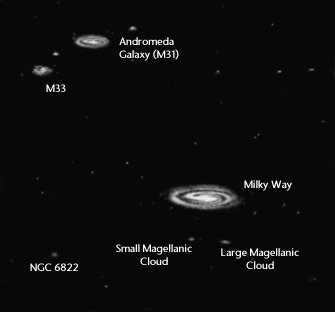 |
| Andromeda’s Galaxy Satellites |
| DDO221 | 00:01:58 | -15:27:51 | IB(s)m IV-V | – 116 | 950 | 11.5×4.0 | 11.03 | 0.09 | ||||||||||
| UGC192 | 00:20:24 | +59:17:30 | IBm? | -344 | 660 | 6.3×5.1 | 11.80 | |||||||||||
| dSph | 775 | |||||||||||||||||
| DDO 3 | 00:33:12 | +48:30:29 | dE5 pec | -193 | 660 | 13.2×7.8 | 10.47 | 0.70 | ||||||||||
| A0032+36 | 00:35:17 | +36:30:31 | dSph | 760 | 4.5×3.0 | 15.00 | 0.19 | |||||||||||
| UGC396 | 00:38:58 | +48:20:12 | dE3 pec + Sy | -202 | 620 | 11.7×10.0 | 10.10 | 0.78 | ||||||||||
| M 110 | 00:40:22 | +41:41:26 | E5 pec | – 241 | 725 | 21.9×11.0 | 8.92 | 0.14 | ||||||||||
| NGC 221 | 00:42:42 | +40:51:52 | E2 (cE2) | -205 | 725 | 8.7×6.5 | 9.03 | 0.31 | ||||||||||
| NGC 224 | 00:42:44 | +41:16:09 | SA(s)b Liner | -300 | 725 | 190×60 | 4.36 | 0.10 | ||||||||||
| A0043+37 | 00:45:44 | +38:00:23 | dE3 pec ? | 810 | 2.5×2.5 | 13.6 | 0.20 | |||||||||||
| NGC292 | 00:52:45 | -72:49:43 | SB(s)m pec | +158 | 58 | 320×185 | 2.7 | 0.17 | ||||||||||
| E349-G31 | 00:08:13 | -34:34:42 | dIBm | +207 | 1.1×0.9 | 15.48 | ||||||||||||
| E351-G30 | 01:00:09 | -33:42:33 | dE3 pec | +110 | 84 | 39.8×30.9 | 10.50 | |||||||||||
| Psc dw | 01:03:53 | +21:53:05 | dIr/dSph | -277 | 810 | 2×2 | 18.00 | 0.10 | ||||||||||
| DDO 8 | 01:04:54 | +02:08:00 | IAB(s)m V | -234 | 720 | 16.2×14.5 | 9.88 | 0.02 | ||||||||||
| 01:10:17 | +47:37:41 | dSph | 810 | |||||||||||||||
| 01:16:11 | +33:21:43 | E? | 680 | 3.6×2.52 | 13.5 | 0.14 | ||||||||||||
| NGC 598 | 01:33:51 | +30:39:37 | SA(s)cd II-III | -179 | 795 | 70.8×41.7 | 6.27 | 0.18 | ||||||||||
| E245-G07 | 01:51:06 | -44:26:41 | IAm | +56 | 417 | 4.9×4.1 | 13.07 | |||||||||||
| E356-G04 | 02:39:59 | -34:26:57 | dE4 | +53 | 140 | 17.0×12.6 | 9.04 | |||||||||||
| E056-G115 | 05:23:34 | -69:45:22 | SB(s)m | +278 | 55 | 645×550 | 0.9 | 0.25 | ||||||||||
| E206-G220 | 06:41:37 | -50:57:58 | dE3 | +229 | 100 | 23.4×15.5 | 22.14 | 0.10 | ||||||||||
| DDO 69 | 09:59:24 | +30:44:42 | IBm V | +20 | 690 | 5.1×3.1 | 12.92 | 0.07 | ||||||||||
| DDO 70 | 10:00:00 | +05:19:42 | Im+ IV-V | +301 | 1370 | 5.1×3.5 | 11.85 | 0.05 | ||||||||||
| DDO 236 | 10:03:07 | -26:09:32 | SB(s)m | +403 | 1260 | 19.1×3.7 | 10.39 | 0.14 | ||||||||||
| A1001-27 | 10:01.8* | -27:05* | dE3 | +361 | 1320 | 1 | ||||||||||||
| Regulus G. | 10:08:27 | +12:18:27 | dE3 | +168 | 270 | 9.8×7.4 | 11.8 | 0.09 | ||||||||||
| DDO 75 | 10:11:06 | -04:42:28 | IBm+ V | +324 | 1420 | 5.9×4.9 | 11.86 | 0.06 | ||||||||||
| 10:13:03 | -01:36:53 | dE3 | +230 | 87 | 0.07 | |||||||||||||
| DDO 93 | 11:13:29 | +22:09:17 | dE0 pec | +90 | 215 | 12.0×11.0 | 12.6 | 0.00 | ||||||||||
| DDO 155 | 12:58:39 | +14:13:02 | Im V | +214 | 1700 | 1.1×1.0 | 14.68 | 0.04 | ||||||||||
| 13:10.6* | -43:07* | -8 | ||||||||||||||||
| 13:24.0* | -30:06* | +274 | ||||||||||||||||
| DDO 199 | 15:09:11 | +67:12 :52 | dE4 | -209 | 60 | 30.2×19.1 | 11.9 | 0.04 | ||||||||||
| DDO 208 | 17:20:19 | +57:54:48 | dE0 pec | -281 | 76 | 35.5×24.4 | 10.9 | 0.08 | ||||||||||
| 01:09.4 | +35:43 | S0 | +178 | 2000: |
| 07:04.5* | -58:27* | Irr | ||
| 23:18.1* | -42:00* | Irr | ||
| UKS2323-326 | 23:26.5 | -32:23 | dIr | +62 |
Due to the absorption of radiation by our Galaxy from a certain area in the sky, galaxies located at low galactic latitudes have been found so far (i.e., near the equatorial plane of our Galaxy, where dust absorption is most concentrated). Other galaxies that have been discovered have a very low surface brightness (Low Surface Brightness (LSB)), and it is only recently, with the introduction of new observational astrophysics instruments, that it has become possible to detect them. Therefore, it is possible to expect that there are a greater number of MG galaxies whose light is either absorbed by dust or is extremely faint, to the point where it is not yet detectable with modern telescopes.
References
Literature
(Material from SEDS and NED was utilized.)
|
Keyword publications: spiral galaxy – elliptical galaxy – M 33 – Local group of galaxies – M 32 – MMO – BMO – BMO – Irregular galaxy – Small Magellanic Cloud – Large Magellanic Cloud – Magellanic Clouds – LMC – SMC – Galaxy – M 110 – Triangle galaxy – Messier catalog – nearest galaxies Publications with words: spiral galaxy – elliptical galaxy – M 33 – Local group of galaxies – M 32 – MMO – BMO – BMO – Irregular galaxy – Small Magellanic Cloud – Large Magellanic Cloud – Magellanic Clouds – LMC – SMC – Galaxy – M 110 – galaxy in the Triangle – Messier catalog – nearby galaxies | |
| See also: | |
THE GALAXY CLUSTER IN OUR NEIGHBORHOOD – represents a cluster consisting of numerous galaxies in close proximity encircling our very own star system, the Milky Way. The constituents of this particular cluster are in constant motion relative to one another, yet are intricately connected by the force of gravity, thus occupying a restricted region spanning approximately 6 million light-years and remaining distinct from other clusters of galaxies. It is widely held that all constituents of this localized group share a common lineage and have undergone a parallel evolutionary journey over the course of roughly 13 billion years.
The Local Group galaxies are a fascinating subject of study in astronomy for two main reasons. Firstly, they can be observed and analyzed in great detail. Secondly, they have a significant impact on our own Galaxy and are themselves influenced by it. The Local Group, along with other nearby galaxy groups and larger galaxy clusters, form part of a larger entity known as the Local Supergroup of galaxies. This sprawling system spans approximately 100 million sv years in diameter and has a thickness of around 35 million sv years. Its central region is occupied by a massive cluster of galaxies located in Virgo, which is approximately 50 million sv years away from us.
Edwin Hubble, an American astronomer, was the first to observe that our Galaxy, along with a few neighboring star systems, forms a relatively isolated group known as the Local Group of galaxies. In his book The World of Nebulae (1936), Hubble described it as “a typical small cluster of nebulae separated in a common area from the rest of the star systems.” This finding has been corroborated by recent studies: the Local Group consists of approximately 35 galaxies with various shapes. It is primarily composed of two spiral systems – the Andromeda Nebula (M31 or NGC 224) and the Milky Way – which are approximately 2.5 million light-years apart. The galaxy in Andromeda is slightly larger and about 1.5 times more massive than our Galaxy.
Inside the Local Cluster, there is a non-random distribution of small galaxies: a significant number of them are attracted to the larger galaxies, such as the Milky Way and the Andromeda Nebula. These two are commonly referred to as “parent” galaxies, although the exact genetic relationship between large and small galaxies is still not fully understood. There is a possibility that the smaller star systems actually act as ancestors to the larger ones. However, in this scenario, a large star system is called a “parent galaxy” due to a familial association: it is surrounded by smaller companion galaxies that can be seen as its children.
For instance, our Galaxy is accompanied by rather sizable Magellanic Clouds and several diminutive systems – Fornax, Draco, Sculptor, Sextans, Carina, and others. The entourage of the Andromeda Nebula includes the exceedingly substantial Messier 32 and NGC 205, as well as petite NGC 147, NGC 185, And I, And II, And III, and others. This is not an idiosyncrasy of the Local Group: in the galaxy realm, small satellites frequently accompany a grand “leader”. Such groups of approximately 1 million sv. years in magnitude are commonly referred to as hypergalaxies. Hence, we can assert that the primary constituents of the Local Group are two hypergalaxies – the Milky Way and the Andromeda Nebula.
The third largest and most massive galaxy in the Local Group is the spiral M 33 located in the Triangle constellation. It appears to have no orbiting satellites, although there are some smaller galaxies that are closer in sky projection to M 33 than to M 31. However, the Andromeda Nebula (M 31) is much more massive than the Triangle Spiral (M 33), so even the distant satellites of M 31 are influenced by its gravitational pull rather than its less massive neighbor. The Local Group is not known for its diverse population, mainly consisting of spiral, irregular, and dwarf galaxies, which is typical for small and less dense collections. Unlike richer clusters, the Local Group does not have large elliptical galaxies. The only true elliptical galaxy is M 32, which is a close companion of the Andromeda Nebula. The remaining spheroidal (type Sph) and dwarf spheroidal (dSph) galaxies are not considered true elliptical systems due to their low density, weak concentration towards the center, and the presence of interstellar gas and young stars.
The Local Group is surrounded by other small clusters of galaxies that are similarly close in proximity. One such cluster, located in the Pump and Sextant constellations, is approximately 5.5 million light years away from the center of the Local Group. The Sculptor cluster, consisting of a group of small galaxies, is approximately 8 million light years away, while another cluster that includes the large spiral galaxy M 81 and the interacting galaxy M 82, known for its intense star formation, is approximately 11 million light years away. The Pump-Sextant group was once believed to be part of the Local Group due to its close proximity, but further analysis of the motion of its main members – the small galaxies NGC 3109, Pump, Sextant A, and Sextant B – has led experts to conclude that it is actually an independent group slowly moving away from the Local Group.
Milky Way Cluster.
Due to the dense interstellar gas and dust surrounding our star system, it is currently difficult to accurately observe and identify all the neighboring galaxies within the Milky Way. However, recent advancements in infrared telescopes have allowed us to discover previously unknown satellites of our Galaxy. This is possible because the longer-wavelength radiation emitted by these stars can penetrate through interstellar dust more easily.
Comparing our Galaxy to the nearby spiral in Andromeda greatly assists in the study of our own Galaxy. However, there are notable differences between the two. The Milky Way’s disk is not as symmetrical as that of the Andromeda Nebula. The spiral arms of our Galaxy are more “branchy and shaggy” and they do not originate from the center of the galaxy like in Andromeda, but rather from the ends of a small bar that crosses the core of our Galaxy. Additionally, our star system has a less massive halo and therefore fewer globular clusters. Currently, we have discovered 150 globular clusters in our Galaxy, with a total estimate of no more than 200. In contrast, the Andromeda Nebula has no less than 400 globular clusters. However, the disk of our Galaxy experiences a more intensive process of star formation, with young stars being formed several times more frequently than in the Andromeda Nebula.
The Magellanic Clouds contain a significant amount of gas and young stars. Despite their smaller mass compared to our Galaxy, they contain a comparable amount of interstellar matter. Extensive regions of star formation can be observed in the Magellanic Clouds, making them an ideal research subject, especially when compared to the dusty Milky Way. The Magellanic Clouds also host numerous young star clusters with massive stars and evidence of supernova explosions. In fact, the only supernova observed within the Local Group in the 20th century occurred in the Magellanic Clouds in 1987.
There is still uncertainty surrounding the reasons behind the presence of approximately 4 billion supernovae in the BMO. It is believed that this phenomenon occurred billions of years ago during a period of intense star formation. This event left behind a significant number of star clusters that are precisely this age. It is postulated that the convergence of the Clouds or the Galaxy may have triggered this burst of star formation. Further examination of distant binary galaxies has revealed that their mutual approaches frequently lead to heightened levels of star formation within them.
The destiny of the Magellanic Clouds appears to be quite definitive: once they have completed a few more rotations around the Milky Way and draw near to its core, they will be ripped apart by tidal forces and dispersed along their orbit. Their stellar population and clusters will merge with the Milky Way, although for a considerable period they will continue to move as a distinct stream, serving as a reminder of their shared genetic origins. Numerous streams of this kind have already been identified in the galactic halo, likely remnants of previously assimilated satellites akin to the Magellanic Clouds.
Andromeda Nebula Subgroup.
Regrettably, the orientation of the Andromeda Nebula’s disk is such that it is almost edge-on from our perspective: our view is inclined at an angle of only 15° with respect to the plane of the disk. As a result, studying the structure of the spiral arms of Andromeda is not significantly easier than studying the structure of our own Milky Way galaxy. However, astronomers studying the Andromeda Nebula also face challenges when it comes to observing our galaxy’s disk, as their view is inclined at an angle of only 21°.
Being the largest member of the Local Group, the Andromeda Nebula is accompanied by a sizable retinue of satellite galaxies. Together with these satellites and the spiral galaxy M 33, it forms a subgroup of stellar islands that occupy the constellations of Andromeda, Cassiopeia, Triangle, and Pisces. This region has been aptly referred to as the “Andromeda Archipelago” by the renowned astronomer Harlow Shapley.
Just like how the Magellanic Clouds are situated in close proximity to our Galaxy, the largest satellites of Andromeda are positioned very near its core. However, they possess no similarity to the gas-rich and youthful stars of the Magellanic Clouds. The satellites of Andromeda are galaxies that have a spherical shape and contain hardly any interstellar material. Among them, the elliptical galaxy M 32 stands out as it is compact and extremely dense, with a relatively massive core. It orbits perilously close to the Andromeda Nebula and is subjected to its powerful gravitational pull, which has already stripped away the outer regions of this satellite, and in a few billion years will result in its ultimate destruction.
In 2003, a new partner (And VIII) was detected within the Andromeda Nebula, observed in the backdrop of its disc, roughly in the vicinity of where the galaxy M 32 is positioned. This partner is challenging to perceive in conventional images due to the substantial erosion caused by the gravitational pull of the host galaxy. It measures almost 10 kpc in length but only a few kiloparsecs in width. Its brightness is around 200 million times that of the Sun; numerous planetary nebulae and globular clusters have been identified within it, as well as approximately 400 thousand times the mass of the Sun in neutral hydrogen. These findings demonstrate that the composition of the Local Group of galaxies is still not fully understood.
According to various researchers who have examined the motion of neighboring galaxies, the total mass of the Local Group of galaxies falls within the range of 1.2 to 2.3 x 10^12 solar masses. In any event, this exceeds the direct estimates of the masses attributed to the visible stars and interstellar medium. Therefore, there exists unseen matter within the Local Group, commonly referred to as “dark matter”, which is likely concentrated in the extended halos of our Galaxy and the Andromeda Nebula.
Studying the nearest galaxies, which are members of the Local Group, is highly valuable and informative in terms of understanding the structure and evolutionary trajectory of the most typical and prevalent stellar systems in the Universe.
Table. MAJOR GALAXIES OF THE LOCAL GROUP
Includes the Galaxy and nearby galaxies that make up a singular system. The local group of galaxies consists of approximately 20 known galaxies with distances of less than 1 Mpc, which includes the Magellanic Clouds and… … …
The local group of galaxies – consists of the Galaxy and nearby galaxies that form a singular system. The local group of galaxies consists of more than 20 known galaxies with distances of less than 1 Mpc, including the Magellanic Clouds and… … …Encyclopedic Dictionary
Local group of galaxies – a collection of nearby galaxies with distances not exceeding approximately 1 million pc (about 3 million light-years). It is comprised of two large groups and dwarf galaxies scattered among them, totaling approximately 30 members. In one of the groups of … … … Big Soviet Encyclopedia
GROUP OF NEARBY GALAXIES – consists of the Galaxy and galaxies in close proximity to it, forming a unified system. The Local Group is composed of approximately 20 known galaxies, with distances not exceeding about 1 Mpc, which includes the Magellanic Clouds and the Andromeda Nebula …
Nearby galaxy group – a collection of galaxies in close proximity to our Galaxy … Astronomical Dictionary
Nearby group – Galaxies in the Local Group The Local Group is a group of galaxies bound together by gravity, including the Milky Way, the Andromeda galaxy (M31), and the Triangle galaxy … Wikipedia
galaxy cluster Encyclopedic dictionary
GALAXY CLUSTER – a collection of galaxies that are relatively close to each other and held together by the force of gravity. There are over 3000 known galaxy clusters, ranging in size from a few dozen to several thousand members. One example of a galaxy cluster is the Local Group of Galaxies… … …Large Encyclopedic Dictionary
GALAXY CLUSTER – a group of galaxies that are relatively close to each other and bound together in a single system by the force of gravity. There are more than 3000 known S. g., with varying numbers of members ranging from tens to thousands. One example of an S. g. is, apparently, the Local Group of Galaxies… Natural History. Encyclopedic Dictionary
List of nearest galaxies – The following is a compilation of known galaxies within a distance of 3.6 megaparsecs (11.7 million light-years) from Earth, listed in order of their proximity to Earth (see note below). 3.6 Mpc represents the distance to the center of the two closest large groups of galaxies: the Groups… … Wikipedia
The motion of objects within space is affected by the gravitational force exerted by the Local Group, but their interactions go beyond this influence.
There is a continuous exchange of matter among these objects, with smaller galaxies typically supplying matter to larger ones. This phenomenon can be observed between the Magellanic galaxies and other members of the Local Group. The gas from the Magellanic galaxies plays a crucial role in the formation of new stars within the Milky Way.
There is also a flow of matter from our star system to the Sculptor galaxy. Sculptor is a faint and hazy celestial object that can only be seen in the night sky of the Southern Hemisphere. Despite its distance, it is actually six times closer to us than the
.
Sculptor appears like a large globular cluster and is classified as a dwarf spheroidal galaxy, with a size that is around 50 times smaller than the Milky Way. Unlike the Magellanic Clouds, Sculptor does not have any giant stars or nebulae.
Astronomers are confident that there are still many more undiscovered members of the Local Group. The search for these hidden galaxies is challenged by the interference caused by the Milky Way’s own radiation, which overlaps significant portions of the sky.
Recently, a new dwarf spheroidal galaxy was found in this region, specifically in the constellation Pegasus. It is possible that this small galaxy is a companion to the dominant spiral Andromeda, which is a prominent member of the Local Group.
The newly discovered galaxy is obscured by the bright glow of the Milky Way and appears as a cluster of faint blue stars spanning approximately 2 thousand light years in size.
Astronomers theorize that dwarf galaxies like this one are the “building blocks” from which larger stellar systems eventually form.
What is the Local Group of galaxies?
Once the precise position of the Milky Way galaxy was established, astronomers were confronted with the challenge of determining its place within the hierarchy of the Universe.
Initially, it was discovered that the Milky Way does not belong to any of the major galaxy clusters, although there is a well-known irregular cluster in the Virgo constellation that is relatively close by.
Subsequent investigations have confirmed that the Milky Way is actually part of a smaller structure known as the Local Group of galaxies.
The Local Group encompasses galaxies within a radius of 5 million light years, totaling over fifty known galaxies. The gravitational forces between these galaxies become evident at such close distances, with their center of mass lying along the line connecting the Milky Way and the Andromeda Galaxy.
What is the velocity of the Local Group of galaxies?
It is common knowledge that the Local Group is not stationary – it orbits the Sun and revolves around the center of the Milky Way. Likewise, the Milky Way itself moves within the Local Group of galaxies. Furthermore, the Local Group is also advancing towards a large cluster of galaxies situated in the Virgo constellation.
Recently, scientists managed to determine the velocity of the Local Group, and it was surprisingly high – approximately 600 km/s.
This finding came as a complete surprise to astronomers and astrophysicists, as there are currently no explanations for such a rapid “descent” towards the Virgo cluster.
Furthermore, it has also become evident that galaxies are united by the force of gravity. Certain clusters of galaxies are comprised of numerous sizable galaxies, whereas our Local Group is relatively modest in comparison. The Local Group consists of merely three large spiral galaxies () and approximately twenty-four smaller dwarf galaxies, which can be categorized into two distinct classes – irregular and elliptical.
Visible in the southern region of the sky are the largest satellites of the Milky Way, known as the Magellanic Clouds. Particularly impressive is the Large Magellanic Cloud (LMC), which is physically larger and closer to us than the Small Magellanic Cloud (SMC). Both of these galaxies are irregular in shape and possess diameters of 20,000 and 10,000 light-years, respectively. They have formed as a result of enormous gas and dust clouds within star-forming regions.
The Tarantula Nebula in the BMO is incredibly luminous that if it were positioned at the same distance as the Great Orion Nebula, it would encompass a vast expanse of the sky. Furthermore, it was in the BMO where a recent brilliant supernova eruption occurred, a remarkable blast that indicated the demise of an extraordinarily massive star.
Irregular galaxies frequently serve as the site for intense star formation. Scientists theorize that these galaxies might be relatively young entities, primitive “building blocks” from which spiral galaxies will eventually emerge. The Magellanic Clouds seem to have been in orbit around the Milky Way for over a billion years. Some of the activity in the process of star formation here is likely triggered by tidal forces exerted by our galaxy on them.
Supernova 1987A. The BMO witnessed the eruption of the most brilliant supernova in recent history in 1987. Despite its enormous distance, the explosion emitted such a dazzling flash that it briefly illuminated the Earth’s sky, reaching a luminosity of 3rd magnitude (visible to the naked eye). This explosive event was soon attributed to the destruction of Sandyulik -69°202, a blue supergiant. Prior to 1987, most astronomers believed that supernovae were unlikely to occur in stars of this type. However, now there is suspicion that this blue supergiant originated as a binary system, where its components gradually approached each other and eventually merged prior to the catastrophic explosion.
There is evidence that the Clouds are being severely affected by gravity, as indicated by the presence of a gas and star tail known as the Magellanic Stream. However, based on measurements of the Clouds’ velocity in space, it appears that they have recently entered their current orbit. Nevertheless, if they continue in this orbit, each time they approach the Milky Way, it will gradually strip away pieces of them and distort their shape until eventually consuming them entirely.
Concealed cosmic systems. The compact stellar clouds that are situated along the plane of the Milky Way obstruct our perspective of extragalactic space. This is why certain neighboring galaxies remained concealed from our observation until recently. One such instance is the spiral galaxy Circulus, which was only uncovered in the 1970s. However, the most remarkable discovery was the identification of the dwarf elliptical galaxy in Sagittarius (referred to as SagDEG) and the dwarf galaxy in Little Dog. Both of these galaxies are currently being engulfed by the Milky Way. They were only detected through thorough examination of the stars encircling the central region of our galaxy.
Within the vicinity of the Milky Way, there exist numerous small irregular and elliptical galaxies. However, none of these galaxies possess any noteworthy characteristics that would capture the attention of the average observer. The subsequent most significant galaxy, on the other hand, is so immense and radiant that it can be easily observed by the unaided eye. The Andromeda Galaxy, which is equally renowned for its designation in the Messier catalog as M31, is a spiral galaxy with a diameter of approximately 250,000 light-years. This is twice the size of the Milky Way.
From our position in space, we perceive Andromeda positioned just above the rib view, resulting in its appearance as a luminous and indistinct ellipse that spans approximately six times the width of the full Moon. Additionally, there is a noticeable concentration of light at its center. Detailed photographs taken with long exposures unveil the presence of dark dust lanes, which help outline the swirling spiral arms.
There are some fascinating differences between M31 and our Galaxy. Andromeda has a mass that is only two-thirds of our galaxy’s mass. This indicates that there is a greater abundance of gas, dust, and other imperceptible dark matter in the Milky Way. A closer examination of the central region of this galaxy reveals the presence of an exceptionally dense collection of stars. It is believed to encircle a supermassive black hole with a mass approximately equivalent to 30 million suns.
Similar to our own galaxy, the Milky Way, the M31 galaxy possesses its own notable group of satellite galaxies. Among them, the M32 and M110 elliptical galaxies stand out as the most prominent. Despite their relatively small size, they boast a significantly higher concentration of stars compared to any other dwarf elliptical galaxy in our vicinity. Additionally, it seems that these galaxies have recently undergone periods of intense star formation. Certain astronomers propose that these galaxies may be the preserved remnants of the central regions of small spiral galaxies that were destroyed by the collision with Andromeda.
The other satellites of the M31 galaxy consist of dwarf elliptical and irregular galaxies, but in close proximity lies the third largest member of the Local Group, which likely orbits Andromeda – the MZZ, also known as the Triangle Galaxy.
This particular spiral galaxy is approximately half the size of the Milky Way. MZZ is positioned flat towards Earth, although it may not possess the same level of visual appeal as Andromeda. Despite its comparatively dim appearance, MZZ is home to one of the most expansive nebulae currently identified, serving as a birthplace for numerous stars. This vast amalgamation of gas, dust, and stars emits such a radiant glow that it has been assigned its own catalog number, NGC 604.
The Local Group of Galaxies is a gravitational system that interconnects more than 50 galaxies, with the Milky Way being one of its constituents.
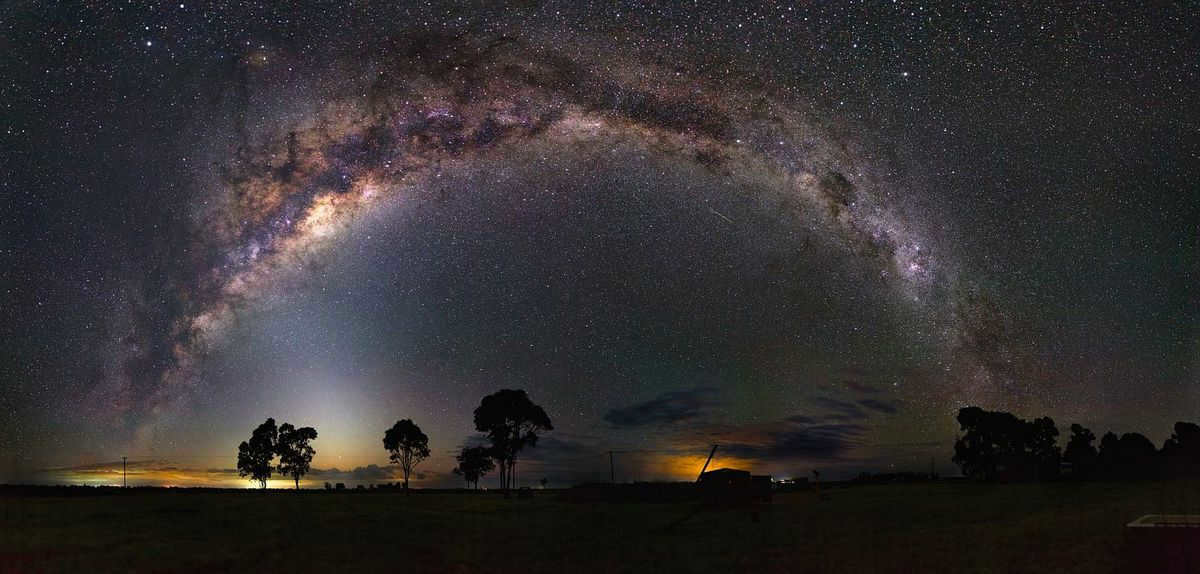
The Local Group of Galaxies is an astronomical wonder that never fails to captivate our imagination. The vastness of cosmic scale is beyond our complete comprehension, yet gazing at the starry sky and delving into popular books on astronomy never fails to astound us. The sheer enormity of celestial objects is unfathomable to our human minds, and the Local Group of galaxies is a prime example of such grandeur in space.
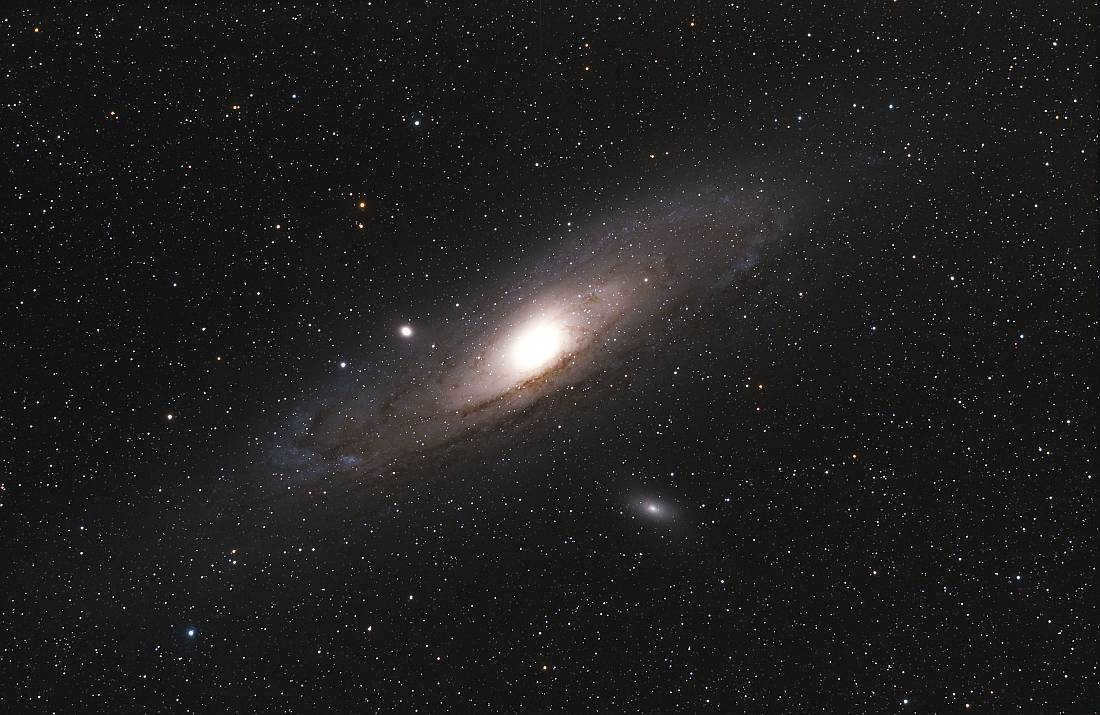
In 2015, there were more than 50 galaxies of different sizes in the Local Group. The most prominent members of this system are the Andromeda Galaxy and the Triangle Galaxy. These three largest galaxies also have their own groups of galaxies that are linked to them through gravitational forces. Moreover, the main galaxies themselves, including the Milky Way, are interconnected by gravitational forces and orbit a shared center of mass in space.
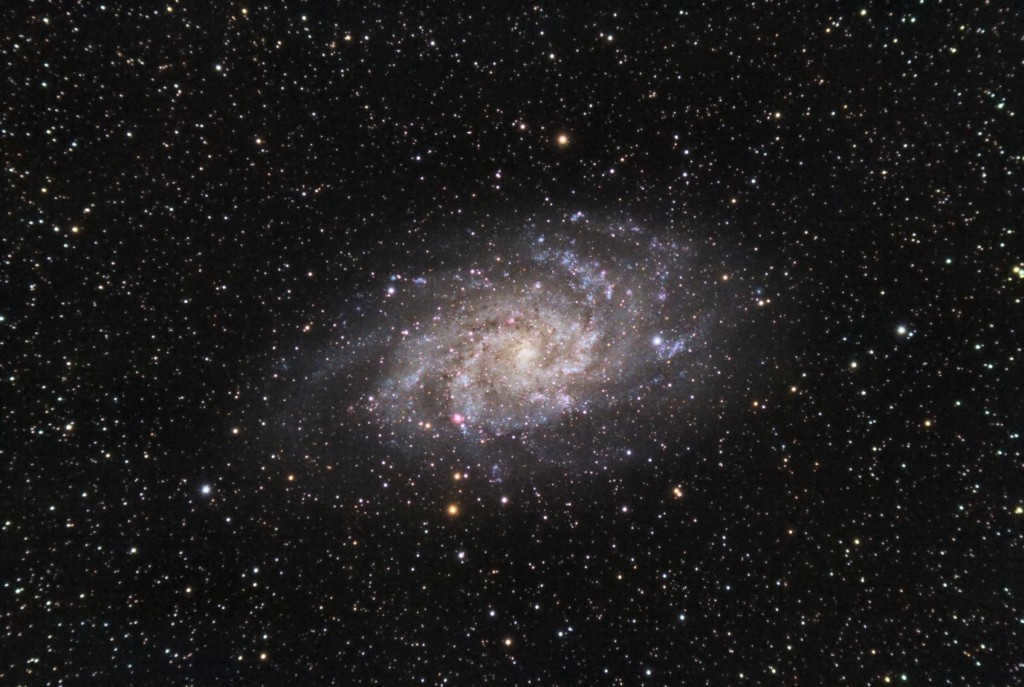
Aside from the vast galaxies and their respective subgroups, the Local Group is also comprised of other diminutive galaxies that cannot be attributed to any of the aforementioned subgroups due to their positioning. The Local Group of galaxies encompasses spiral, elliptical, dwarf elliptical, dwarf spheroidal, and irregular galaxies. It is possible that before the turn of the century, scientists will stumble upon new classifications of galaxies that are currently unknown. This is highly plausible given the ongoing serious observations and studies of the local group that are actively being conducted by astronomers worldwide.
Which galaxies are part of the local group?
The local group is composed of over 50 individual galaxies of varying sizes. These galaxies are held together by the force of gravity, causing them to orbit a shared center of mass. Scientists believe that most of the galaxies in the local group are approximately 13 billion years old, suggesting a common age. Additionally, these galaxies share similar compositions, indicating a possible shared origin.
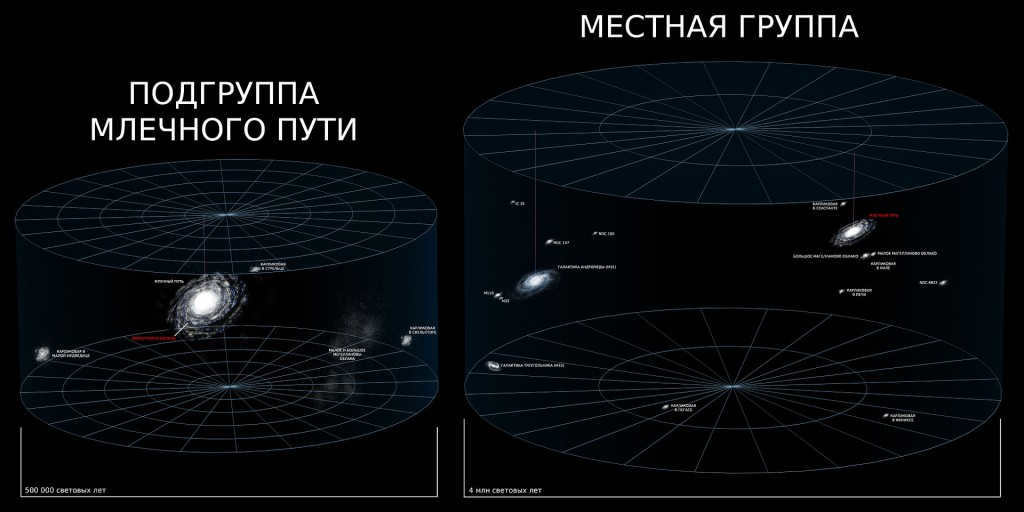
The Milky Way Galaxy is not the largest galaxy in the observable Universe, but it holds great significance to us because it is the home of the Solar System and, consequently, humanity. The Milky Way is a member of the local group of galaxies, serving as a central hub in this cosmic neighborhood. At its core lies the Milky Way itself, with fourteen satellites orbiting around it. These satellites include the Big Dipper, Little Dipper, Big Dog, Sagittarius, Dragon, Sculptor, Lion, Kiel, and others.
Home " Study Abroad " Local Galaxy System. Local Group
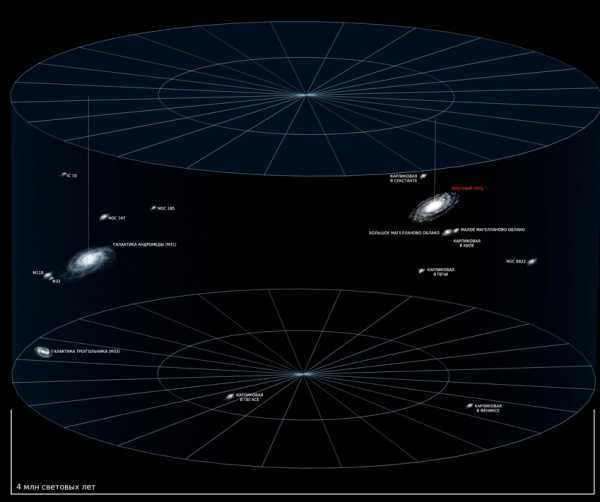
The Local Group is a collection of more than 50 galaxies that are connected by gravity. One of the galaxies in this group is the Milky Way.
About the Local Group
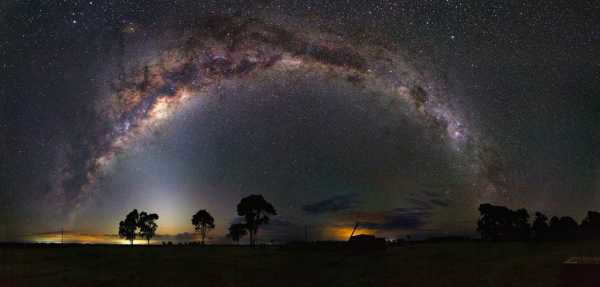
The Local Group of Galaxies is an astronomical entity that has the ability to captivate our imagination. The vastness of cosmic scales is something that humans struggle to fully comprehend. Nonetheless, as we gaze at the celestial heavens and delve into popular literature on astronomy, we are consistently awestruck by them. Space objects can be so immense that their true size eludes our understanding. The Local Group of galaxies is a prime example of such an immense entity in the cosmos.
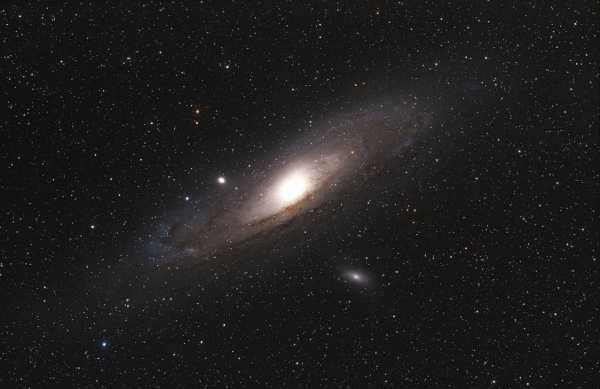
By 2015, the Local Group contained more than 50 galaxies of different sizes. The Milky Way, Andromeda, and Triangle galaxies are the most prominent members of this system. These three galaxies have their own subgroups of galaxies that are gravitationally connected to them. The major galaxies themselves, Andromeda, Triangle, and the Milky Way, are also held together by gravitational forces and are located in space around a shared center of mass.

Galaxy M33 in the Triangle
Besides major galaxies and their subgroups, the Local Group also encompasses additional dwarf galaxies that cannot be categorized into any of the aforementioned subgroups due to their positioning. The Local Group of galaxies comprises spiral, elliptical, dwarf elliptical, dwarf spheroidal, and irregular galaxies. It is conceivable that scientists may uncover novel types of galaxies that are presently unrecognized before the turn of the century. This possibility is quite plausible since astronomers worldwide continue to actively carry out rigorous observations and research on the local group.
Which Galaxies are Part of the Local Group?
The local group is comprised of over 50 entities, each being a galaxy of varying sizes. These galaxies are held together by gravitational forces, orbiting a shared center of mass in the vastness of space. Nearly all the galaxies in the local group are believed to be roughly the same age, approximately 13 billion years old. Moreover, they share similar compositions, suggesting a possible shared origin among these celestial objects.
Studies of galaxies within the local group have revealed that they possess a distinct organization, indicating that they are not randomly arranged, but rather purposefully positioned. The majority of local group galaxies are situated along an imaginary line that can be drawn between the Milky Way and the Andromeda Nebula. The smaller galaxies tend to be concentrated around the three main galaxies: the Milky Way, Andromeda, and the Triangle.
The Milky Way subgroup
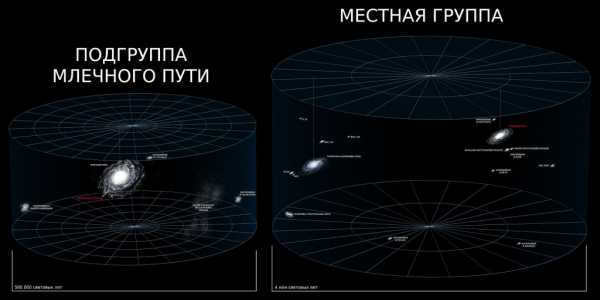
The Milky Way Galaxy is not the largest galaxy in the observable Universe, but it holds great significance for us because it is the home of the Solar System, and therefore, us. The Milky Way Galaxy is a key member of the local group of galaxies, serving as a central hub. At its core is the Milky Way itself, which is orbited by its fourteen satellites. These satellites include the Big Dipper, Little Dipper, Big Dog, Sagittarius, Dragon, Sculptor, Lion, Kiel, and several others.
Previously, it was believed that the Milky Way subgroup included the Large and Small Magellanic Clouds. However, in 2006, the Hubble telescope made an intriguing discovery – these objects are moving at a rapid pace compared to other Milky Way satellites. This suggests that they may not be gravitationally bound to the Milky Way.
Regardless, the trajectory of the Large and Small Magellanic Clouds indicates that in approximately four billion years, they will be assimilated by the Milky Way galaxy. Similarly, the Milky Way itself faces the risk of being engulfed by its colossal neighbor, the Andromeda Nebula.
The Andromeda cluster
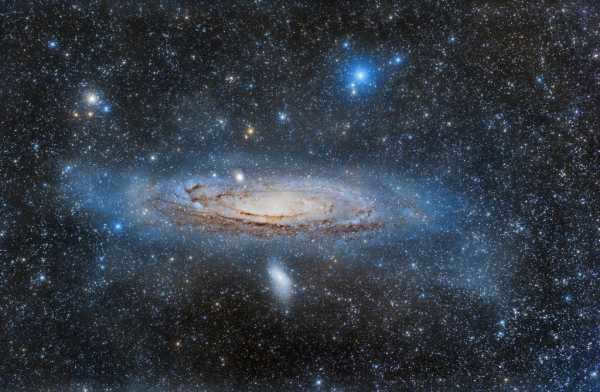
The Andromeda Galaxy M31 and its accompanying satellites
The Andromeda Galaxy is the largest celestial body within the local group of galaxies. Similar to the Milky Way, this entity contains 18 known dwarf satellite galaxies that are gravitationally connected to it. The most well-known among these are M32 and M110. These galaxies are recognized due to their significantly small apparent stellar magnitude considering their vast distance from us, making them the brightest satellites of the Andromeda Nebula.
Group of Triangles
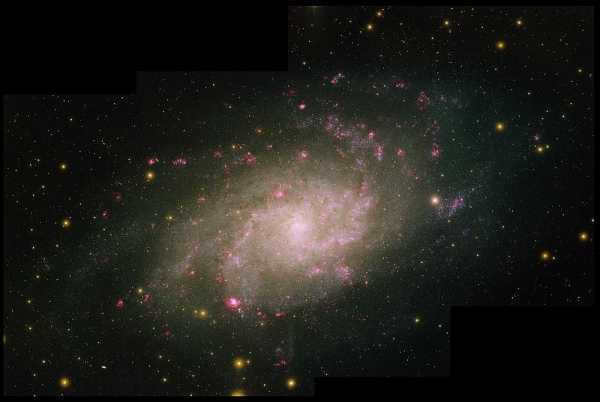
The Triangle galaxy, known as Galaxy M33, is relatively small in size with a diameter of only 50,000 light-years, which is considered small in comparison to other galaxies in the universe. Despite its size, this astronomical object holds the distinction of being the third largest galaxy in the local group of galaxies. Currently, researchers have identified three suspected satellites of the Triangle Galaxy, which include Triangle I, Andromeda II, and the dwarf galaxy Pisces.
Resources about the subject
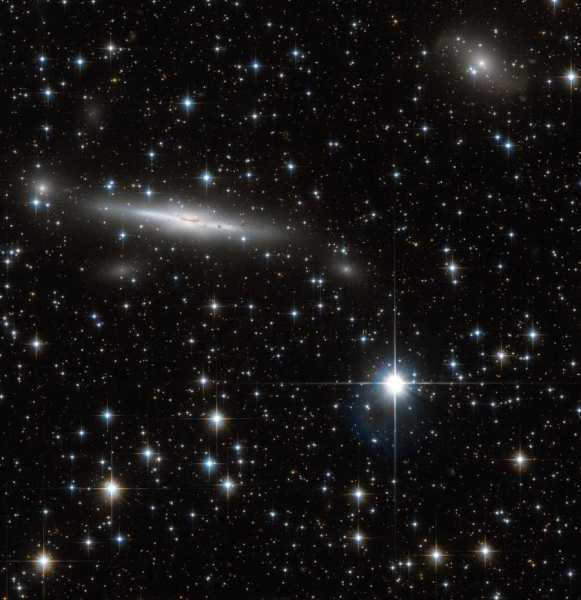
What is the Great Attractor?
Unfortunately, there is still no conclusive evidence that the aforementioned satellites form a unified system with the Triangle Galaxy. For instance, the dwarf galaxy Andromeda II is positioned approximately halfway between the Andromeda Nebula and the Triangle Galaxy. The gravitational field to which this galaxy is affiliated is still uncertain. While most scientists contend that it belongs to the Triangle Galaxy, some astronomers hold a different viewpoint, asserting that it is actually a part of the Andromeda Nebula. In fact, they even refer to this dwarf galaxy as Andromeda XXII. Only further observations and examination of this celestial object will be able to ascertain the truth regarding its affiliation with one of the two local subgroups.
After thoroughly examining the structure, composition, and general information about the local group of galaxies, we have come across several fascinating facts about this astronomical phenomenon.

